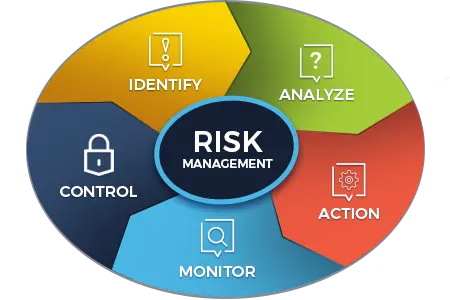Introduction
Mastering the art of risk management becomes the compass that directs professionals toward success in the dynamic field of business analysis, where projects are frequently compared to uncharted waters. This blog will delve into the complexities of risk management, looking at methods, methodologies, and practical recommendations to help business analysts handle uncertainties and ensure project success.
The Significance of Risk Management in Business Analysis
Understanding why risk management is not just a checkbox but a strategic imperative for project success. Real-world examples illustrate the impact of effective risk management and the consequences of neglecting this crucial aspect.
Components of Effective Risk Management
Breaking down the key components that constitute a robust risk management framework, each step plays a vital role in steering projects away from potential pitfalls, from risk identification to mitigation strategies.
The Dance of Uncertainty: Risk Identification Techniques
Exploring methodologies and techniques to uncover potential risks before they become significant challenges. The importance of thorough stakeholder engagement and collaborative efforts in identifying hidden risks.
Quantitative vs. Qualitative Risk Analysis
Distinguishing between quantitative and qualitative approaches to risk analysis. Knowing when and how to apply each method, ensures a nuanced understanding of the risks and their potential impacts on the project.
Crafting Mitigation Plans: Strategies for Success
Guidance on developing effective mitigation plans tailored to the specific risks identified. Real-world case studies showcasing successful risk mitigation and lessons learned from projects that faced challenges in this area.
Continuous Monitoring and Adaptation
Emphasizing the need for ongoing risk monitoring throughout the project lifecycle. How to adapt risk management strategies as the project evolves, ensuring a dynamic and responsive approach to uncertainties.
Pitfalls to Avoid: Common Mistakes in Risk Management
Spotlighting typical pitfalls that business analysts might encounter in risk management. Practical tips for overcoming challenges and maintaining a proactive and effective risk management approach.

Communicating Risks: Transparency and Stakeholder Engagement
Strategies for transparently communicating risks to stakeholders, fostering a culture of openness and collaboration. Engaging stakeholders in risk assessment and decision-making processes for a unified approach to project challenges.
Case Study: Triumphs and Tribulations
Analyzing a real-world case study where meticulous risk management played a pivotal role in project success. Deriving critical lessons and insights to inform future initiatives.
Agile Adaptation: Integrating Risk Management into Agile Environments
Understanding integrating risk management into Agile methodologies seamlessly. The role of iterative planning, adaptive strategies, and constant communication in Agile risk management.
Emerging Trends in Business Analysis Risk Management
Exploring how technology and data analytics are reshaping risk management practices in the business analysis landscape. Staying ahead of emerging trends to ensure relevance and effectiveness in an ever-evolving field.
Conclusion
Mastering the art of risk management in business analysis is not a destination but a continuous journey. By adopting a proactive and strategic approach to uncertainties, business analysts can transform challenges into opportunities, steering projects toward success in the unpredictable seas of project management. As we navigate these waters, let the principles and insights shared in this blog serve as your compass for mastering the intricate dance of risk management in business analysis.




